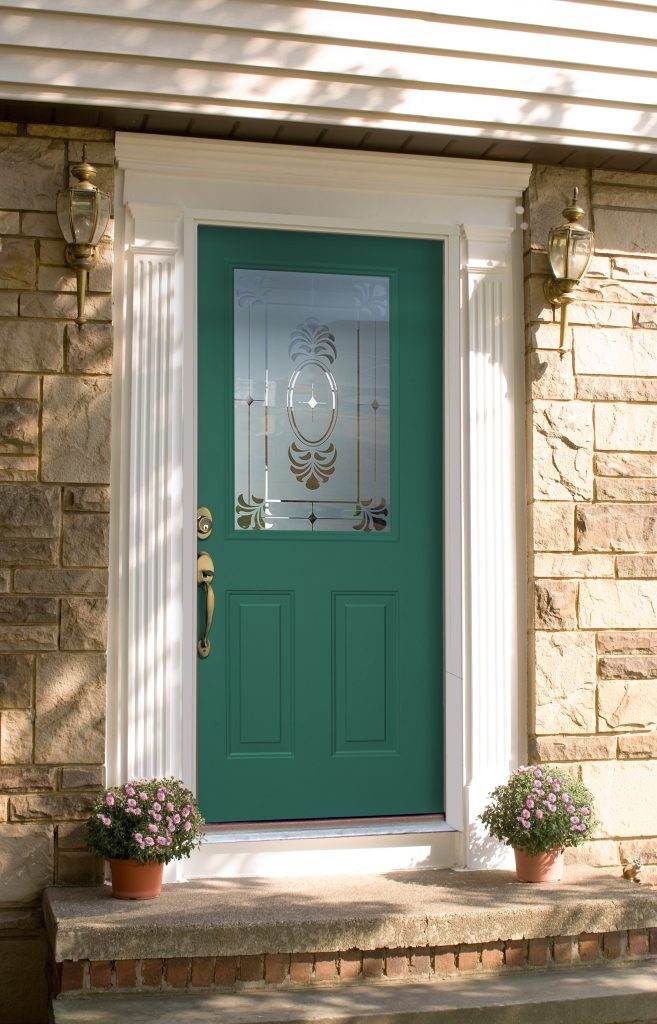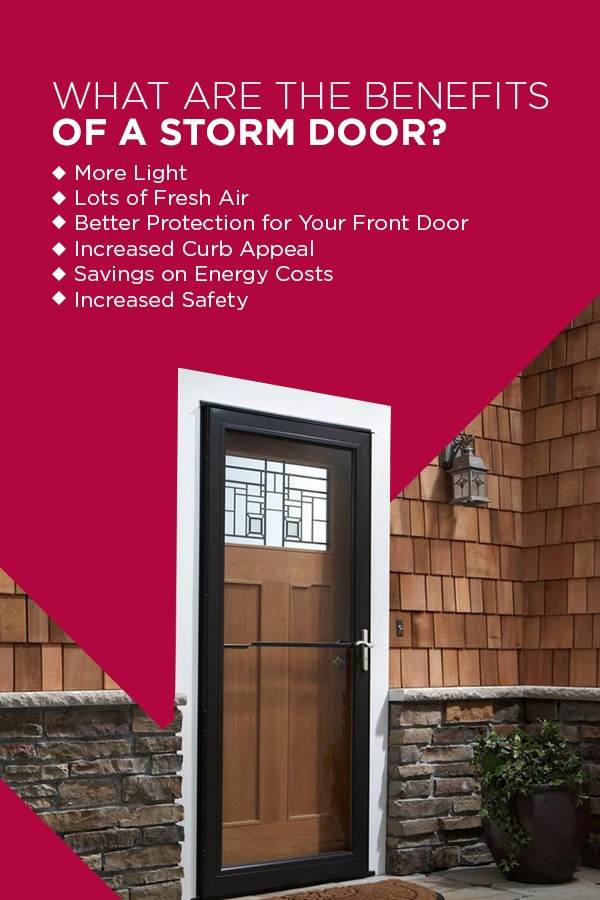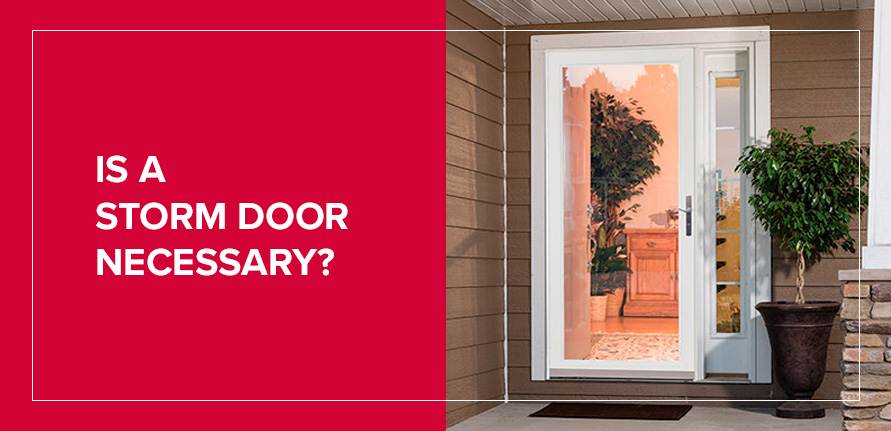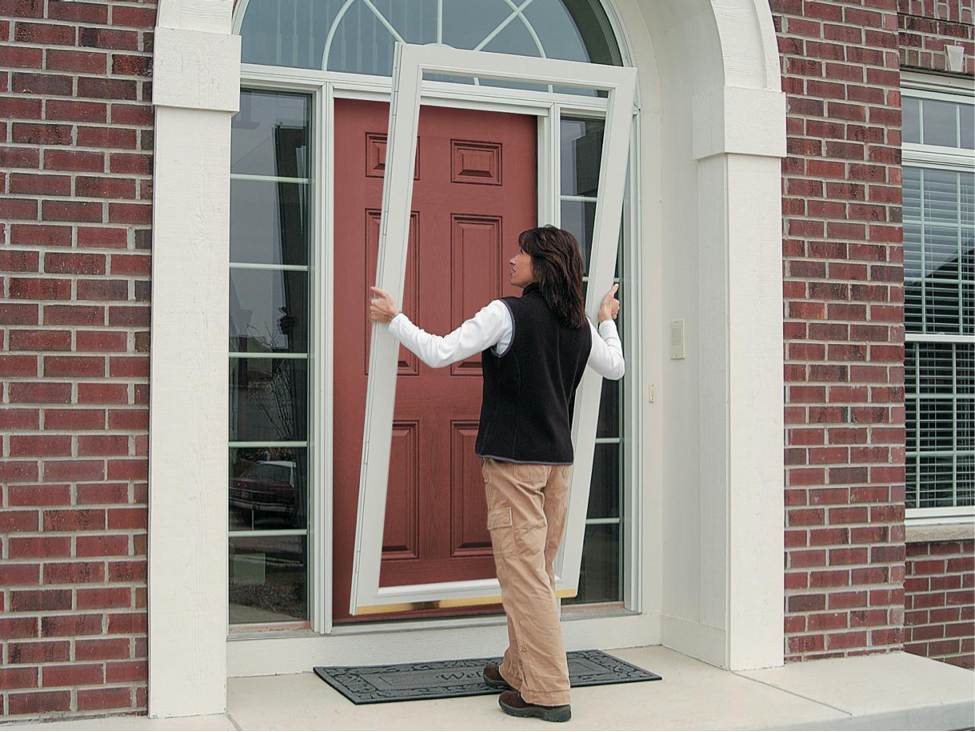So you’re in the market for a new storm door, but you’re not sure if it’s worth the investment? Well, you’re in the right place! In this article, we’ll explore the question that’s been on your mind: Are Storm Doors Worth The Money? We’ll dive into the benefits they offer, such as added security, energy efficiency, and enhanced curb appeal. We’ll also discuss the potential drawbacks and help you make an informed decision. By the end of this article, you’ll have a clear understanding of whether investing in a storm door is the right choice for you. Let’s get started!
Benefits of Storm Doors
Storm doors offer a number of benefits for homeowners, making them a worthwhile investment. Here are some of the key advantages:
Enhance Energy Efficiency
One of the primary benefits of storm doors is their ability to enhance energy efficiency in homes. The additional layer that storm doors provide helps to seal gaps and reduce drafts, preventing cold air from entering in the winter and warm air from escaping in the summer. This can lead to significant energy savings by reducing the load on your heating and cooling systems. Ultimately, this translates to lower energy bills for homeowners.
Improve Security
Another important benefit of storm doors is their ability to improve home security. Storm doors are designed with reinforced frames and glass, making it more difficult for potential intruders to gain access to your home. Additionally, many storm doors come with multiple locking points, providing an extra layer of protection. This added security can provide homeowners with peace of mind, especially in areas with higher burglary rates.
Reduce Noise and Drafts
Apart from enhancing energy efficiency and security, storm doors also help to reduce noise levels in your home. The extra layer provided by storm doors acts as a barrier against outside noise, making your living spaces quieter and more peaceful. Additionally, storm doors help to minimize drafts, which can be particularly beneficial if you live in an area with harsh weather conditions. By reducing drafts, storm doors help to maintain a more comfortable indoor environment, regardless of the outside weather.
Types of Storm Doors
When considering storm doors, it’s important to understand the different types that are available. Here are three common types of storm doors:
Full-View Storm Doors
Full-view storm doors are an ideal option if you have a visually appealing front door that you want to showcase. These doors are designed with a large glass panel, providing an unobstructed view of your main door. Full-view storm doors are available in a variety of materials and finishes to complement your home’s exterior design.
Ventilating Storm Doors
If you’re looking for a storm door that allows for better airflow, a ventilating storm door is a great choice. These doors have an interchangeable glass and screen panel, allowing you to easily switch between full ventilation and protection from the elements. Ventilating storm doors are practical for homes located in areas with mild climates, as they provide the flexibility to enjoy a cool breeze when desired.
Retractable Screen Storm Doors
Retractable screen storm doors offer a combination of convenience and versatility. These doors feature a retractable screen that can be pulled down or hidden when not in use. This allows for unobstructed views and increased air circulation, while still providing protection against insects and other pests. Retractable screen storm doors are particularly popular for back or side entrances, where a more casual and relaxed atmosphere is desired.

This image is property of www.gielgaragedoors.com.
Considerations Before Buying a Storm Door
Before purchasing a storm door, there are several factors to consider. Taking these factors into account will ensure that you choose the right storm door for your specific needs. Here are some important considerations:
Climate and Weather Conditions
The climate and weather conditions in your area play a significant role in determining the type of storm door that will be most effective. For instance, if you live in an area with extreme temperatures or frequent storms, a storm door with a high insulation rating and impact-resistant glass would be recommended. On the other hand, if you reside in a milder climate, a standard storm door with moderate insulation would suffice.
Material and Durability
The material of the storm door is another crucial consideration. Common materials for storm doors include aluminum, vinyl, wood, and fiberglass. Each material has its own set of advantages and disadvantages in terms of durability, maintenance, and aesthetics. For example, aluminum storm doors are lightweight and low-maintenance, while wood storm doors offer a classic and elegant appearance. Consider your priorities and choose a material that aligns with your preferences and requirements.
Maintenance and Longevity
It’s important to understand the maintenance requirements of different storm door materials before making a decision. For example, wood storm doors may require regular staining or painting to maintain their appearance and protect them from the elements. On the other hand, aluminum or vinyl storm doors are generally low-maintenance and only require occasional cleaning. Additionally, consider the longevity of the storm door. Investing in a high-quality, well-constructed storm door can ensure its durability and longevity, saving you money in the long run.
Cost of Storm Doors
Like any home improvement project, the cost of a storm door is an important factor to consider. The overall cost includes the initial investment, potential energy savings, and added home value. Here’s a breakdown of these cost considerations:
Initial Investment
The initial cost of purchasing and installing a storm door can vary depending on the type of door, material, size, and additional features. On average, a basic storm door can range from $200 to $500, while more high-end and customizable options can exceed $1,000. It’s essential to set a budget and explore different options to find a storm door that meets your requirements without breaking the bank.
Potential Energy Savings
While the upfront cost of a storm door may seem significant, it’s essential to consider the potential energy savings it can provide. By reducing drafts and improving insulation, storm doors can help lower your heating and cooling costs. The exact energy savings will vary depending on factors such as your climate, the efficiency of your existing doors, and how well your home is insulated. However, studies have shown that storm doors can result in energy savings of up to 33%, making them a worthwhile investment in the long term.
Added Home Value
In addition to potential energy savings, installing a storm door can also add value to your home. Storm doors are considered a desirable feature by many homebuyers, as they offer enhanced energy efficiency, security, and curb appeal. While the exact value added will depend on various factors, such as the local real estate market and the quality of the door, it’s generally believed that a well-chosen and well-maintained storm door can increase the resale value of your home.

This image is property of www.qualityoverheaddoor.com.
Installation and Maintenance
Once you’ve chosen the right storm door for your home, it’s important to consider the installation and maintenance process. Here are a few options to consider:
Professional Installation
For those who are not comfortable with DIY projects or lack the necessary tools and expertise, professional installation is a recommended option. Hiring a qualified installer ensures that the storm door is properly fitted and securely installed. While professional installation does come at an additional cost, it can save you time and potential headaches down the road.
DIY Installation
If you have some DIY experience and the necessary tools, installing a storm door yourself can be a cost-effective option. Many manufacturers provide detailed installation instructions, and there are numerous online resources and tutorials available to guide you through the process. However, it’s important to note that improper installation can result in issues such as air leaks, gaps, or damage to the door, so ensure you follow the instructions carefully and take your time during the installation process.
Cleaning and Maintenance Tips
To ensure the longevity and optimal performance of your storm door, regular cleaning and maintenance are essential. Here are a few tips to keep in mind:
- Clean the door regularly using a mild detergent and warm water. Avoid using abrasive cleaners or solvents that may cause damage to the door’s finish.
- Inspect the weatherstripping and seals regularly to ensure they are intact and properly sealing the door. Replace any damaged or worn-out weatherstripping to maintain maximum energy efficiency.
- Lubricate the hinges, locks, and other moving parts annually to prevent rusting and ensure smooth operation.
- Regularly check and tighten any loose screws or hardware to keep the storm door secure and functioning properly.
- If you have a storm door with a retractable screen, make sure to clean the screen and tracks regularly to prevent dirt and debris buildup.
By following these maintenance tips and taking proper care of your storm door, you can extend its lifespan and maximize its benefits.
Common Mistakes to Avoid
When purchasing and installing a storm door, it’s important to avoid some common mistakes that can lead to dissatisfaction or unnecessary expenses. Here are a few mistakes to watch out for:
Choosing the Wrong Size
One of the most common mistakes homeowners make is selecting a storm door that doesn’t fit properly. Before making a purchase, measure the dimensions of your existing door opening carefully. Consider both the width and height, as well as any obstructions or architectural features that may impact the installation. If in doubt, consult with a professional to ensure you choose the right size storm door for your home.
Ignoring Energy Efficiency Ratings
While all storm doors offer some level of energy efficiency, not all doors are created equal. Pay attention to the energy efficiency ratings of different models and choose one that meets your climate and energy-saving goals. Look for doors with a high insulation rating and energy-efficient glass to maximize the benefits of your storm door.
Neglecting Door Hardware
In the excitement of choosing a storm door, it’s easy to overlook the importance of door hardware. The quality and functionality of the hinges, handles, locks, and other hardware components can significantly impact the durability and performance of your storm door. Invest in high-quality hardware that is built to withstand the elements and provide reliable security.

This image is property of www.qualityoverheaddoor.com.
Alternatives to Storm Doors
While storm doors offer a range of benefits, they may not be the right solution for every homeowner. Here are a few alternatives to consider:
Screen Doors
If you’re primarily looking to improve airflow and keep insects out, a traditional screen door may be a more suitable option. Screen doors are designed to allow for maximum ventilation while offering minimal protection against the elements. They are typically less expensive than storm doors and available in various styles to match your home’s aesthetic.
Security Doors
If security is a top concern for you, investing in a security door may be a better choice. These doors are constructed with heavy-duty materials and reinforced frames to provide enhanced protection against break-ins. While security doors may not offer the same level of energy efficiency or ventilation as storm doors, they are an excellent option for homeowners prioritizing security.
Weatherstripping
For homeowners seeking to reduce drafts and improve energy efficiency without the expense of a storm door or screen door, weatherstripping is a cost-effective alternative. Weatherstripping involves sealing gaps around doors and windows using materials such as weatherstrips, caulk, or foam tapes. While it may not provide the same level of protection or aesthetic appeal as a storm door, weatherstripping can be a practical solution to address energy efficiency concerns.
Conclusion
In conclusion, storm doors offer a range of benefits that make them a worthwhile investment for many homeowners. From enhancing energy efficiency and improving security to reducing noise and drafts, storm doors can greatly enhance the comfort and functionality of your home. By considering factors such as climate and weather conditions, material and durability, and maintenance requirements, you can choose the right storm door for your specific needs. While the initial investment may seem significant, the potential energy savings and added home value justify the cost in the long run. Whether you opt for professional installation or tackle the project yourself, proper installation and regular maintenance are essential to ensure the optimal performance and longevity of your storm door. By avoiding common mistakes and exploring alternative options such as screen doors, security doors, or weatherstripping, you can make an informed decision that best suits your home and lifestyle. So, if you’re looking to enhance energy efficiency, improve security, and reduce drafts and noise in your home, consider investing in a high-quality storm door.

This image is property of goguida.com.
